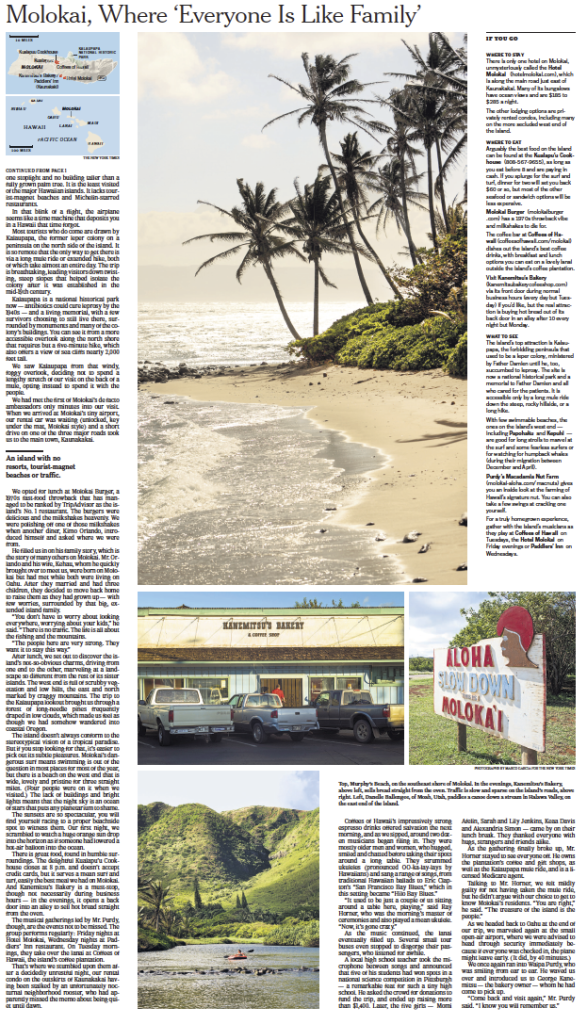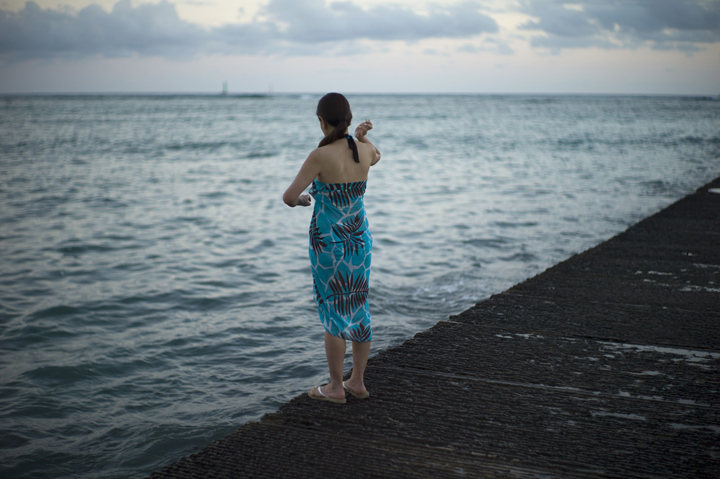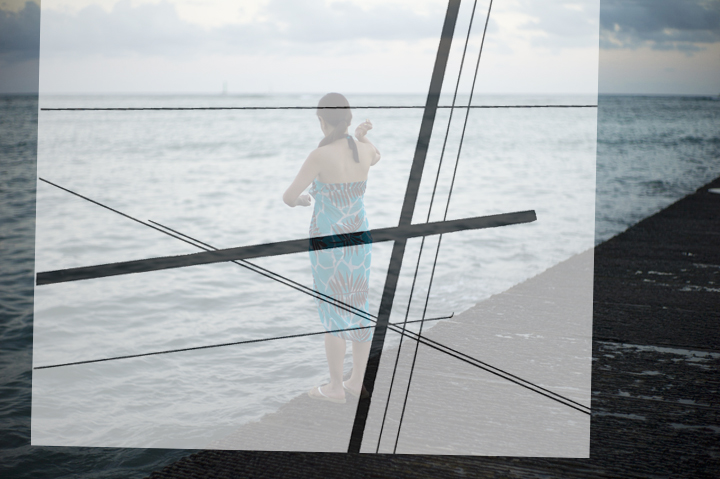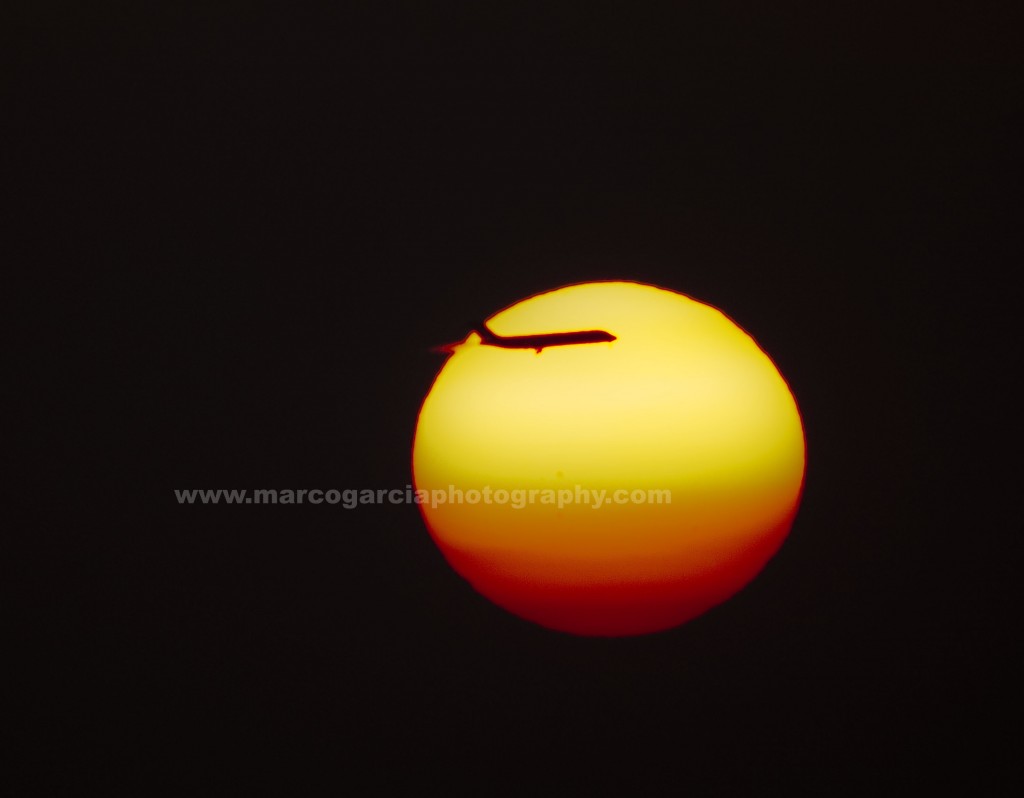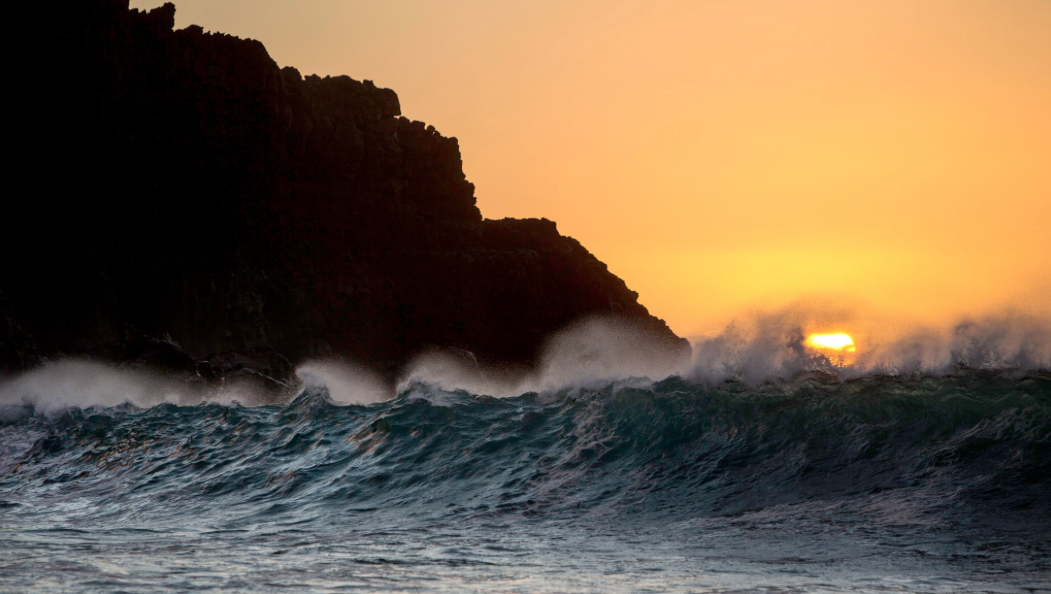
Over the years, Molokai has proven to be a difficult island for me to travel and document. I’ve had a few negative experiences including an angry haole transplants demanding I leave his island, to really bad weather, (and I mean really bad weather) to a near fatal ride on the back mule that nearly tumbled down the side of a mountain. Molokai has been challenging to say the least in my photo history. However, the charming island always embraces me and I always capture something fantastic, even though I still fear a confrontation from an angry non-natives.
I took an overnight trip to Molokai trip for The New York Times this past December to capture the island’s small time charm and natural wonders. The focus of writer Lynn Zinser’s story was a character named Waipa Purdy, whom I found almost instantly inside of Kanemitsu’s Bakery, a coffee shop with a Cheers-esque vibe where everybody knows your name…and also knows when you’re an outsider. Purdy, a long time resident with a local lineage stretching back many decades, quickly embraced me and introduced me to a colorful cast of residents, relatives, and a few visitors who had been in town long enough for him to meet. Purdy quickly helped soothe out my position on the island as not just a visitor but also a friend. Small town residences tend to keep their guard up when cameras slinging strangers come stomping through town so it was great to get his blessing in front of what felt like the whole town gathered at the decades old bakery.
After taking many pictures in the small town of Kaunakakai, I headed out see the rest of the island. Although the island is relatively small, there are pockets of microclimates that turn the monochromatic Molokai into a vastly colorful environment. Having traversed the island in the past, I knew what to capture and where to go. But I found some great luck at Kepuhi Bay, on Molokai’s west side as I captured a wonderful sunset shot.
The west side’s usually yields a great images at sunset but having only a few days to capture a famous Molokai sunset, I worried I had chosen the right location. Sunsets always do seem “greener” on the other side but by the time I set up, I had no choice but to stay put and await the drop. As the descent began, I moved myself towards a rocky cliff that bordered the bay to the left and lined up the waves, rocks and sun into what turned into a cover shot for the story. I had been standing next to a group of locals who were also taking pictures and one of the guys turned to me and said I was really lucky, as everyone had recognized the surreal sunset we had just witnessed.
